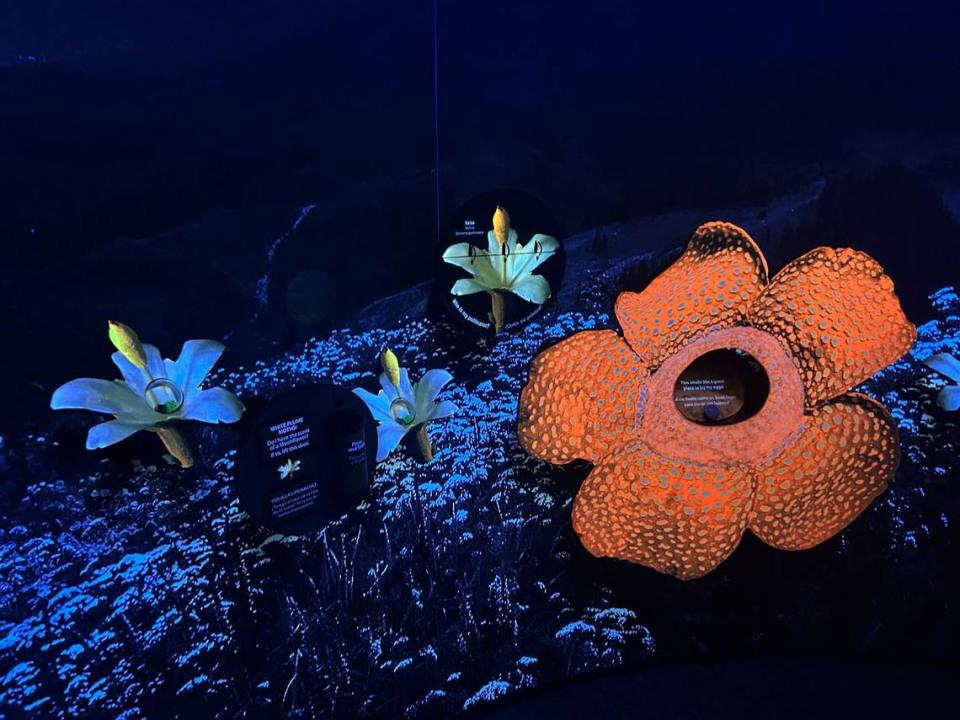NC science museum exhibit lets visitors try their hands (and costumes) at pollination
In the night, moon flowers — divine, white bodies with heart-shaped leaves — radiate like a star-shaped Christmas tree topper. At the sight of dawn, they collapse.
Moon flowers have adapted to the sleep cycles of nocturnal pollinators. They emerge like Cinderella in the moonlight, giving off strong perfume scents that attract moths and flies to deliver their seeds.
A new exhibit at the N.C. Museum of Natural Sciences lets you (and/or your children) step into that role of a pollinator — you will serve as that vital connection between a plant and its progeny.
“Amazing Pollinators” opened June 15 and showcases stunning lifeforms like moon flowers, all of which need a little help from you — their pollinator friends.
The exhibit arrives right in time for USDA’s National Pollinator Week, celebrating the role these species play in the production of over 100 crops in the United States.

Through the Eyes of a Pollinator
As a pollinator, you will embark on a survival quest that will test your persistence and craftiness. With costumes available, you can even suit up for the challenge.
Visitors can transform into anything from a beetle to a white plume moth, a similarly angelic creature with a wingspan that gives the illusion of a three-legged windmill.
You’ll see up close why pollinators are vital to maintaining the ecosystem and our food supply. About 75% of flowering plant species require assistance from pollinators to reproduce.
“It all begins with pollinators and their success,” said Jeff Michael, deputy secretary of the N.C. Department of Natural and Cultural Resources.
There has been growing concern that pesticide use and climate change are endangering insect pollinators. About 40% of all insect species are headed toward extinction over the next few decades, scientists estimate.
Honey bees, the most crucial insect pollinator for North Carolina crops, have been declining dramatically since the 1980s because of parasitic species. Over this period, the number of hives managed by the state decreased from 180,000 to 100,000.
“If you hurt the insects, you hurt the plants, and we need the plants,” said Roland Kays, head of the Biodiversity Lab at the N.C. Museum of Natural Sciences. “They’re just kind of all connected.”
Carl Hediner runs a travel blog, NC Tripping, with his wife. Completing the quest with his two children, Hediner said, “It’s fun because you get to ask your kids questions. What kid is going to turn down answering a question? You know — being right.”
Visiting the Exhibit
With a million visitors each year, the North Carolina Museum of Natural Sciences is a hot spot for families to immerse themselves in the wonders of science. In its usual lineup, the museum showcases whale skeletons, North Carolina’s very own Ant-Man, and Dueling Dinosaurs, a unique opportunity to observe researchers uncover how the tales of two 67 million-year-old dinosaurs intertwine.
The Amazing Pollinators exhibit is open until Sept. 29. It is free to members, $12 for adults, and $8 for children. The museum is at 11 W. Jones St., Raleigh and is open Tuesday through Sunday, 10 a.m. to 5 p.m.

